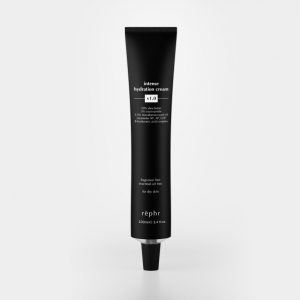One day, back when I was in college – during the first week of class, my advertising professor was giving a terrific lecture on the principles and fundamentals of advertising. During the lecture, my professor – almost methodically, slowly walked back and forth from one side of the class to the other, often peering at her audience (me and my fellow classmates) as she spoke, as if she was verifying that she had our undivided attention.
Most of my classmates – myself included, were captivated by the lecture and were totally engaged as she articulated the differences between product advertising and institutional advertising.
However, at one point during the lecture, she suddenly stopped talking – and pacing, to focus all of her attention on the one student that did not give her his undivided attention. Probably due to the fact that he couldn’t seem to put his phone away from texting long enough to even act as if he was interested in the lecture.
The professor, with a stoic look on her face, stared straight at the student as if she was trying to look through him – then asked the student if he could recall the last point that she had just made prior to her stopping to address him. The room seem to grow even more quiet, as if we were all anticipating the student to have some quick-witted reply to her question.
The student, with a shocked look on his face – (likely from embarrassment) paused for about eight seconds, then said, “Ugh…honestly, I can’t remember. Can you repeat it?” The professor’s response to his request is something that has stuck with me to this day. Her response not only helped cultivate the way that I approach each marketing project. It also has helped in many other facets in my life.
The professor told the student, “People remember things that matter to them.”
Those seven lucid words were so profound to me because they made perfect sense. They also served as a segue to the rest of her lecture (I’m still not sure if she did that purposely for a dramatic effect or not, but I sure thought it was cool that she did).
She then went on to give us a lesson on the two main objectives of advertising. Which are: brand awareness and brand recall. First, an advertisement has to achieve brand awareness by making the audience aware that it exists. Then, it has to achieve brand recall in order for the audience to remember it, so that they can take a desired action whenever they want or need it. Or, to simply recall who delivered the message and why.
And although there are many tactics that can be executed to achieve brand awareness. Here’s the three most important steps to take in order to make sure that after brand awareness is created, consumers will recall your brand at their time of want or need. Which starts by making sure that your brand matters to them.
Salience starts with the soul
The reason that I remember the details of that particular lecture better than a lot of the other lectures that I sat through in college is because the moment was epiphanic. And like all epiphanic moments – it touched me emotionally.
The first step to ensuring that consumers will recall your brand is to touch their souls.
Think about this, when you’re walking down the aisle of a grocery store and you see the store brand cola (the generic cola that just about every grocery store has) right next to Coca-Cola, don’t you have more of an emotional attachment to Coca-Cola?
That’s because throughout your whole life, you’ve seen a myriad of Coca-Cola ads. And in those ads, they delivered messaging that either made you laugh and smile – which put you in a good mood. Or caused you to ponder and reflect – which put you in a pensive mood. You probably have absolutely no attachment to the generic cola because it’s more of a product than a brand.
I have one more example of the power of emotion. Think of your favorite song of all-time. I’m sure the thing that makes that song your favorite is because it struck a chord with you emotionally. Something about the song’s lyrics or its vibe, resonated with you on a deeper level.
The way to ensure that your brand touches people emotionally is by understanding your audience. Who are they? Who do they want to become? What do they love? What do they fear? Then, make sure that your brand’s marketing messages addresses those four questions over time.
By doing that, your brand will foster an emotional relationship with your audience and you’ll build a connection with them on a deeper level. Which means your brand will then matter to them.
Connect to a category
As stated above, the two main objectives of an advertisement are to achieve brand awareness and brand recall. And one of those is definitely harder to attain than the other.
Brand recall is by far more difficult to attain than brand awareness.
That’s because it’s easier to bring attention to a brand than it is to maintain retention of the brand’s existence due to the fact that there’s usually so many other brands out there in its category that provides the same products or services.
The second step to making sure that consumers recall your brand is by connecting it to its category. In fact, I believe that one of the four fatal errors that destroy marketing campaigns is not connecting a brand or product to its category.
In advertising, some of the biggest firms emphasize that each ad campaign focus on T-C-B. Which stands for target, category, and benefit. If you know your target audience. And can connect your brand to its category. Then, convey its benefit to your audience in an ad – your ad will have a very good chance of being memorable to consumers.
For example, let’s say that one of your brand’s products are flavored water with electrolytes and you wanted to sell it to people that lived athletic lifestyles (bare with me).
You could connect your brand to its category in an advertisement by featuring a thirsty football player (target) winning a game and digging through the team’s cooler to pick up a plain bottle of water (category), looking at it – then saying ‘no way’ while throwing it to the ground. Only to pick up your brand’s flavored water to quench his thirst (benefit).
Repetition leads to retention
Lastly, the third most important step to making sure that consumers recall your brand is the simplest one. Just be repetitive.
Repeat your brand’s name in your advertisements, your jingles, and all of your public relations releases. Also, be sure to show the product multiple times on the screen in television ads. And make sure all of your brand’s print advertisements show your brand’s product and logo front and center so that everyone clearly can see it.
The more often that we see or hear things, the more likely we are to remember them (like the lyrics of your favorite song).
Conclusion
Whether it’s product advertising, institutional advertising, social media marketing, content marketing, or any other form of marketing that you can think of. The ultimate goal is to make sure that your brand is top-of-mind whenever consumers have a want or need for the products or services that your brand provides.
There are various tactics to achieve that, which (for the sake of time) I did not mention in this article. For instance, have you noticed that I used alliteration in the title of each of the three steps? Alliteration is a very useful expedient for remembering things.
However, if your marketing strategies focus on touching consumers emotionally. While connecting your brand to its category. And repetitively feature your brand’s name and its products in every touchpoint of your marketing efforts. Your brand will then matter to consumers. Therefore – it will be remembered.
Originally published here
Business 2 Community(34)





